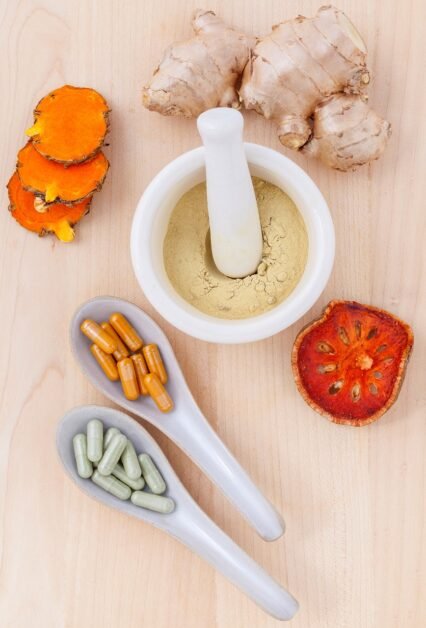Say Goodbye to Melasma with These Effective Home Remedies
Melasma is a common skin condition that causes dark, discolored patches to appear on the face. These patches are often brown or gray in color and can vary in size and shape. Melasma is most commonly found on the cheeks, forehead, chin, and upper lip, and is more prevalent in women than men. The exact cause of melasma is not fully understood, but it is believed to be related to hormonal changes, sun exposure, and genetics. Hormonal changes, such as those experienced during pregnancy or while taking birth control pills, can trigger melasma. Sun exposure is also a major factor in the development of melasma, as UV rays can stimulate the production of melanin, the pigment that gives skin its color. Additionally, genetics may play a role in predisposing individuals to melasma, as it tends to run in families.
Melasma can be a source of frustration and self-consciousness for those who suffer from it, but understanding the causes and triggers of the condition can help individuals better manage and treat it. By taking steps to protect the skin from sun exposure and addressing hormonal imbalances, it is possible to reduce the appearance of melasma and improve skin health.
Natural Remedies for Melasma: How to Use Lemon Juice and Turmeric to Fade Dark Spots
Natural remedies can be an effective and affordable way to fade dark spots caused by melasma. Lemon juice is a popular home remedy for lightening skin and reducing the appearance of dark patches. The citric acid in lemon juice has natural bleaching properties that can help to lighten hyperpigmentation. To use lemon juice for melasma, simply apply fresh lemon juice to the affected areas using a cotton ball or pad. Leave the juice on for 15-20 minutes before rinsing with warm water. It is important to note that lemon juice can make the skin more sensitive to sunlight, so it is crucial to apply sunscreen after using this treatment.
Another natural remedy for melasma is turmeric, a spice that has been used for centuries in traditional medicine for its anti-inflammatory and skin-lightening properties. To make a turmeric mask for melasma, mix turmeric powder with honey or yogurt to form a paste, then apply it to the affected areas and leave on for 15-20 minutes before rinsing off. Turmeric can stain the skin, so it is important to be cautious when using this treatment and avoid getting it on clothing or other fabrics.
The Power of Aloe Vera: Using this Plant to Soothe and Lighten Melasma
Aloe vera is a versatile plant that has been used for centuries for its healing and soothing properties. When it comes to melasma, aloe vera can be a beneficial natural remedy for soothing inflammation and lightening dark spots. Aloe vera gel contains compounds that have been shown to inhibit melanin production, making it an effective treatment for hyperpigmentation. To use aloe vera for melasma, simply apply fresh aloe vera gel directly to the affected areas and leave on for 20-30 minutes before rinsing off with warm water. Aloe vera can also be used as a moisturizer to help keep the skin hydrated and healthy.
In addition to its skin-lightening properties, aloe vera also has anti-inflammatory effects that can help to calm irritated skin and reduce redness associated with melasma. Regular use of aloe vera can help to improve the overall appearance of the skin and reduce the visibility of dark patches. It is important to choose pure, natural aloe vera gel without added chemicals or fragrances for the best results.
Exfoliation and Melasma: How to Safely Remove Dead Skin Cells to Reduce Dark Patches
Exfoliation is an important step in any skincare routine, but it is especially beneficial for individuals with melasma. By removing dead skin cells from the surface of the skin, exfoliation can help to reduce the appearance of dark patches and improve overall skin tone. However, it is crucial to exfoliate gently and avoid harsh scrubs or abrasive treatments that can irritate the skin and exacerbate melasma.
One gentle exfoliation method for melasma is using a soft washcloth or konjac sponge to gently buff away dead skin cells. This can be done 2-3 times per week to help promote cell turnover and reduce hyperpigmentation. Another option is to use a chemical exfoliant, such as a mild alpha hydroxy acid (AHA) or beta hydroxy acid (BHA) product. These exfoliants work by dissolving the bonds between dead skin cells, allowing them to be easily sloughed away. It is important to start with a low concentration of AHA or BHA and gradually increase as tolerated to avoid irritation.
The Benefits of Vitamin C: Incorporating this Antioxidant into Your Skincare Routine for Melasma
Vitamin C is a powerful antioxidant that can help to brighten the skin and reduce the appearance of dark spots caused by melasma. This essential nutrient plays a key role in collagen production and has been shown to inhibit melanin production, making it an effective treatment for hyperpigmentation. Incorporating vitamin C into your skincare routine can help to improve overall skin health and reduce the visibility of melasma.
There are several ways to incorporate vitamin C into your skincare routine, including using a vitamin C serum or cream. These products can be applied directly to the skin after cleansing and before moisturizing to help brighten and even out skin tone. It is important to choose a stable form of vitamin C, such as ascorbic acid or sodium ascorbyl phosphate, and store it in a cool, dark place to prevent oxidation. Additionally, consuming foods rich in vitamin C, such as citrus fruits, strawberries, and bell peppers, can help to support healthy skin from the inside out.
Managing Melasma with a Healthy Diet: Foods and Nutrients that Can Help Improve Skin Health
A healthy diet plays a crucial role in supporting overall skin health and can be beneficial for individuals with melasma. Certain nutrients have been shown to support skin health and may help to reduce the appearance of dark patches caused by melasma. Antioxidants, such as vitamins A, C, and E, can help to protect the skin from damage caused by free radicals and support collagen production. Foods rich in these antioxidants include leafy greens, berries, nuts, and seeds.
In addition to antioxidants, omega-3 fatty acids are important for maintaining healthy skin and may help to reduce inflammation associated with melasma. Foods high in omega-3s include fatty fish, flaxseeds, chia seeds, and walnuts. It is also important to stay hydrated by drinking plenty of water throughout the day, as dehydration can exacerbate skin issues such as dryness and dullness.
Lifestyle Changes to Support Melasma Treatment: Stress Management and Sun Protection Tips
In addition to skincare treatments and dietary changes, making lifestyle adjustments can also support melasma treatment and improve overall skin health. Stress management is an important aspect of managing melasma, as stress can trigger hormonal imbalances that may exacerbate the condition. Engaging in stress-reducing activities such as yoga, meditation, or deep breathing exercises can help to promote relaxation and balance hormone levels.
Sun protection is another crucial aspect of managing melasma, as UV rays can stimulate melanin production and darken existing patches. It is important to wear sunscreen with at least SPF 30 every day, even on cloudy days or during the winter months. Additionally, wearing protective clothing such as wide-brimmed hats and sunglasses can help to shield the skin from harmful UV rays.
In conclusion, melasma is a common skin condition that can be frustrating to manage, but with the right approach, it is possible to reduce the appearance of dark patches and improve overall skin health. By understanding the causes of melasma and incorporating natural remedies, skincare treatments, dietary changes, and lifestyle adjustments into your routine, you can effectively manage this condition and achieve a more even complexion. It is important to be patient and consistent with your efforts, as treating melasma often requires a multifaceted approach. With dedication and perseverance, you can take control of your skin health and feel more confident in your appearance.







